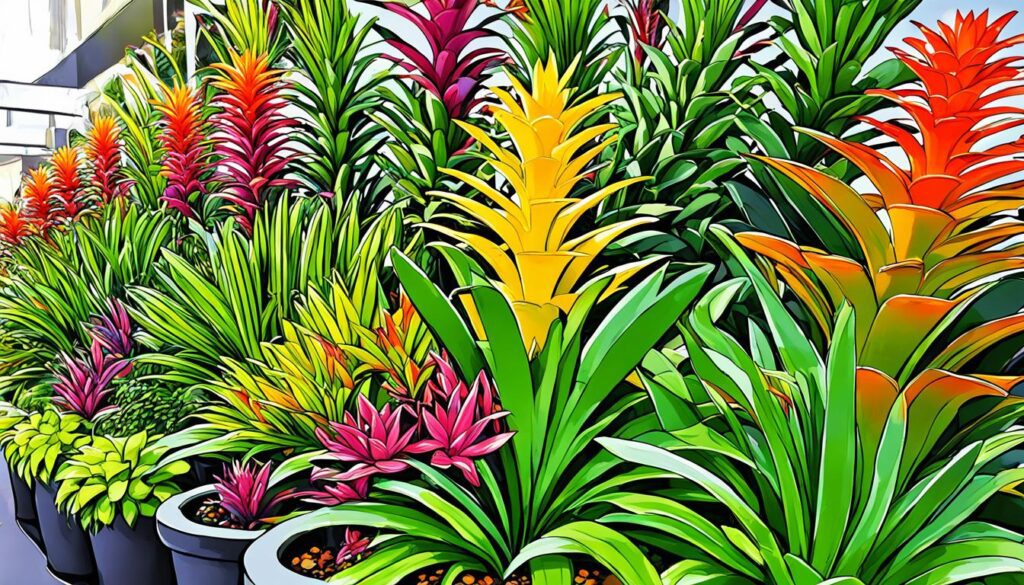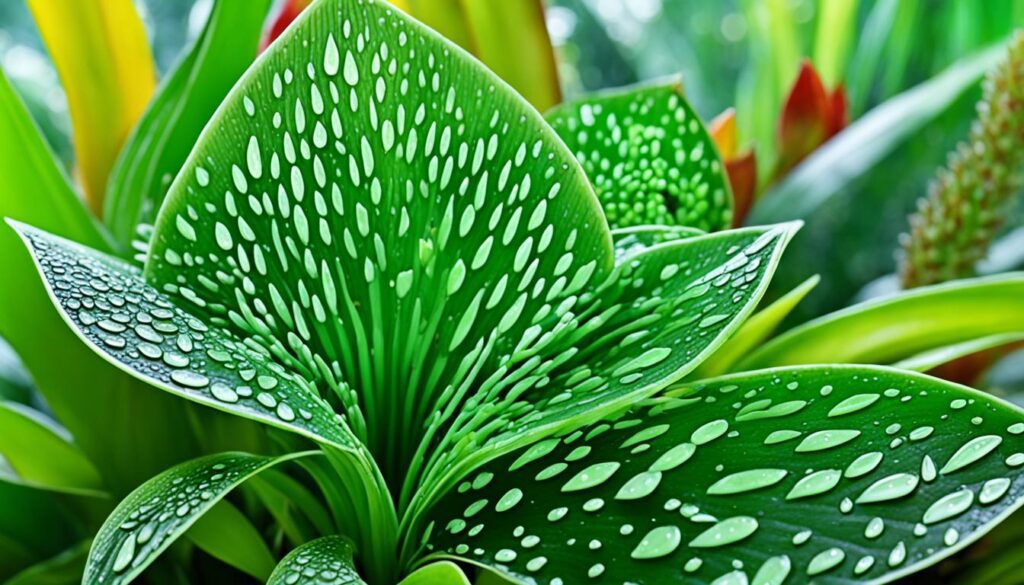As plantas bromélias, nativas das Américas, têm conquistado cada vez mais admiradores ao redor do mundo. Com mais de 1.500 espécies apenas no Brasil, essas plantas exóticas e coloridas se destacam como uma opção versátil e de fácil cultivo para decorar espaços interiores e exteriores, mesmo em áreas reduzidas.
As bromélias ornamentais podem ser cultivadas em vasos, fixadas em troncos, em kokedama ou mesmo sobre o xaxim, uma placa de fibras vegetais que imita o habitat natural dessas plantas. Além disso, existem espécies raras que se desenvolvem nos dossel das florestas, e para protegê-las, o Artigo 26 do Código Florestal Brasileiro proíbe a extração de muitas plantas presentes na lista de espécies ameaçadas do país.
Esses vegetais tropicais são muito apreciados por paisagistas, arquitetos e decoradores para compor ambientes residenciais, comerciais e até mesmo em grandes empreendimentos imobiliários. A escolha dos vasos também faz toda a diferença na composição visual final.
Introduction to Ornamental Bromeliads
Bromélias Ornamentais, or ornamental bromeliads, are a captivating family of plants native to the Americas. With over 1,500 species found in Brazil alone, these diverse and colorful plants have become increasingly popular among landscape designers and homeowners alike. Whether you’re decorating a garden, a cozy indoor space, or a real estate development, these hardy, low-maintenance plants can add a touch of tropical flair to any setting.
What are Bromeliads?
Bromeliads are a unique group of plants that can be grown in a variety of ways, including in pots, on trunks, in kokedama, or on xaxim. These plantas bromélias are known for their striking foliage and vibrant, often long-lasting blooms, making them a versatile and eye-catching addition to any décor. Bromélias de interior, or indoor bromeliads, are particularly popular among homeowners who want to bring a touch of the tropics to their living spaces.
Cultivating bromélias is relatively easy, and they require minimal care compared to many other houseplants. Their cultivo de bromélias, or cultivation, can be a rewarding and enjoyable hobby for both novice and experienced gardeners alike. From the espécies de bromélias found in the lush bromélias tropicais of South America to the more bromélias exóticas and bromélias coloridas grown in homes and gardens around the world, these remarkable plants offer a wealth of diversity and beauty to explore.

As bromélias ornamentais continue to captivate gardeners and design enthusiasts, understanding the unique characteristics and cuidados com bromélias, or care requirements, of these bromélias raras is essential for creating stunning and long-lasting displays. By learning more about these versatile and low-maintenance plants, you can unlock a world of possibilities for transforming your living spaces into vibrant, tropical oases.
Bromélias Ornamentais: Versatile and Low-Maintenance
Bromélias, or ornamental bromeliads, are a fascinating group of plants that offer a wide range of versatility and low-maintenance care. These tropical wonders come in an array of captivating colors, shapes, and sizes, making them a popular choice for decorating both indoor and outdoor spaces.
Rare Bromeliad Species
Among the many species of bromélias, some rare and unique varieties stand out. Certain species, such as those that grow high up in the treetops, are protected by Brazilian law to prevent over-harvesting and extinction. These exceptional plants are often used in landscape design, adding a touch of exotic tropical flair to any setting.
One such rare bromeliad species is the Vriesea gigantea, also known as the “giant bromeliad.” This magnificent plant can grow up to 6 feet (1.8 meters) tall, with vibrant red and yellow leaves that form a stunning rosette. Another rare gem is the Cryptanthus zonatus, a ground-dwelling bromeliad with intricate patterned leaves that resemble a starfish.
These unique bromélias are not only visually captivating but also play a crucial role in their natural ecosystems. They serve as a vital source of food and shelter for a wide variety of animals, from insects to small mammals and birds. Protecting and preserving these rare species is essential for maintaining the delicate balance of tropical environments.

“Bromélias are a true testament to the wonders of nature. Their diverse forms and colors never cease to amaze and inspire.”
Whether you’re a seasoned plant enthusiast or a budding gardener, incorporating these versatile and low-maintenance bromélias into your indoor or outdoor spaces can bring a touch of the tropics to your home.
Conclusion
Bromeliads are a versatile and low-maintenance plant that can be used to decorate small spaces, both indoors and outdoors. With their wide range of colors, shapes, and sizes, bromeliads can be easily incorporated into a variety of design schemes. Whether planted in pots, hung on walls, or used in landscape design, these tropical plants can add a touch of exotic beauty to any environment.
By understanding the care and growing requirements of different bromeliad species, homeowners and designers can create stunning displays that showcase the unique and diverse nature of these remarkable plants. From the vibrant hues of the Aechmea to the graceful curves of the Tillandsia, bromeliads offer endless possibilities for those looking to add a touch of the tropics to their living spaces.
Whether you’re a seasoned gardener or a design enthusiast, exploring the world of ornamental bromeliads can be a rewarding and enjoyable experience. With their low-maintenance needs and versatile applications, these plants can bring a touch of the exotic to any setting, transforming small spaces into lush, captivating oases.
FAQ
What are bromeliads?
Bromeliads are a family of plants native to the Americas, with over 1,500 species found in Brazil alone. They are versatile and low-maintenance plants that can be grown in a variety of environments, including pots, on trunks, in kokedama, or on xaxim.
Where are bromeliads found?
Bromeliads are native to the Americas, with a particularly high diversity in Brazil, where over 1,500 species have been identified.
What makes bromeliads popular for decorative purposes?
Bromeliads are popular among landscape designers for their use in decorating gardens, homes, and real estate developments. Their wide range of colors, shapes, and sizes make them a versatile choice for a variety of settings, both indoor and outdoor.
Are there any rare or endangered bromeliad species?
Yes, there are rare bromeliad species that thrive in the treetops. To protect these endangered species, Article 26 of the Brazilian Forest Code prohibits the extraction of many plants on the Brazilian endangered species list.
How can the choice of pots or placement affect the overall decoration with bromeliads?
The choice of pots and placement can make a significant difference in the overall decoration when using bromeliads. Careful selection and placement of these plants can enhance the visual appeal and create stunning displays in gardens, homes, and real estate developments.